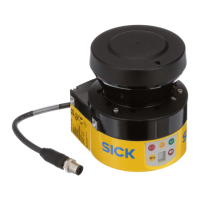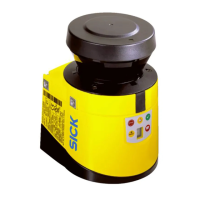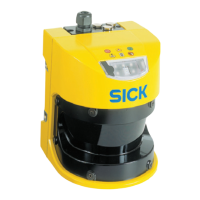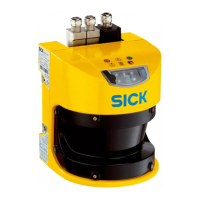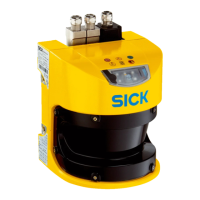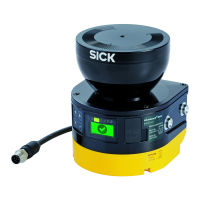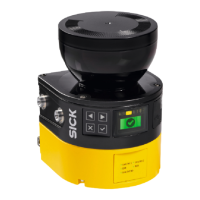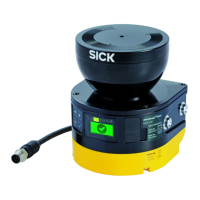Chapter 4 Operating instructions
S3000
64 © SICK AG • Industrial Safety Systems • Germany • All rights reserved 8009942/WK81/2012-11-28
Subject to change without notice
Configurable functions
4.10.6 Checking of the monitoring case switching
To check the switching between monitoring cases, configure a series of monitoring cases.
Here you can define either an arbitrary sequence, a unique sequence, or two alternative
sequences.
Arbitrary sequence: It is allowed to switch from one monitoring case to any other defined
monitoring case.
Unique sequence: It is only allowed to switch from a monitoring case to another
specifically defined monitoring case.
Alternative sequence: It is allowed to switch from a monitoring case to one of two
specifically defined monitoring cases.
Use the monitoring of the monitoring case switching as an additional check on your
control. For example, in this way deviations of a vehicle from a corridor or a system from
the stipulated production process can be detected.
Arbitrary sequence Unique sequence Alternative sequence
You can configure the sequence of monitoring cases in the CDS.
4.10.7 Park/stand-by mode
If, in mobile applications, vehicles are not moved for a time (e.g. for battery charging), the
OSSDs can be switched to the OFF state and the laser on the S3000 can be switched off.
In this way the power consumption of the device is reduced.
In this way you also prevent the safety laser scanners from dazzling each other and
entering an error condition.
The function can be realized with the aid of the park mode or the stand-by mode
If, in an EFI system, you only use the OSSDs on one safety laser scanner (common OSSDs),
then the OSSDs on this safety laser scanner will switch to the OFF state as soon as either
of the two safety laser scanners is switched to the park/stand-by mode. If, on the other
hand, you use the OSSDs on both safety laser scanners (separate OSSDs), then only the
OSSDs on the safety laser scanner that is switched to park/stand-by mode will switch to
the OFF state.
Recommendation
the monitoring case
switching
Note
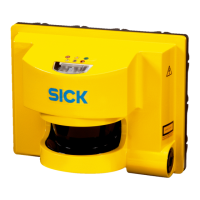
